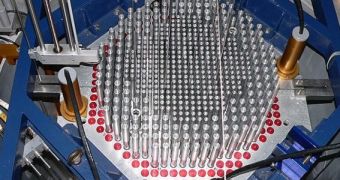A group of scientists from the Massachusetts Institute of Technology (MIT) Nuclear Reactor Laboratory and the University of Newcastle, in Australia, propose that future water-based cooling systems designed to remove unwanted heat from nuclear reactors may become even more efficient if their performances are augmented using magnetic fields.
According to the experts, heat transfer in existing reactors is somewhat lacking, especially in power plants that are cooled exclusively by water. Hot spots can easily form within reactor cooling pools, which can lead to catastrophic failures and meltdowns.
But the new approach may not be limited solely to nuclear power plants. The experts say that the same principle could be easily applied to cooling systems meant for electronic devices as well. The new technology can also be scaled upwards, such as for nuclear fusion reactors.
The secret in the new approach is the use of small magnetite particles, which are obtained from a particular type of iron oxide. These particles are extremely magnetic, as their name suggests, and they can be used to improve the heat exchange rate between cooling pools and reactor cores.
Further details of the work can be found in the latest issue of the International Journal of Heat and Mass Transfer, Science Blog reports.

 14 DAY TRIAL //
14 DAY TRIAL //